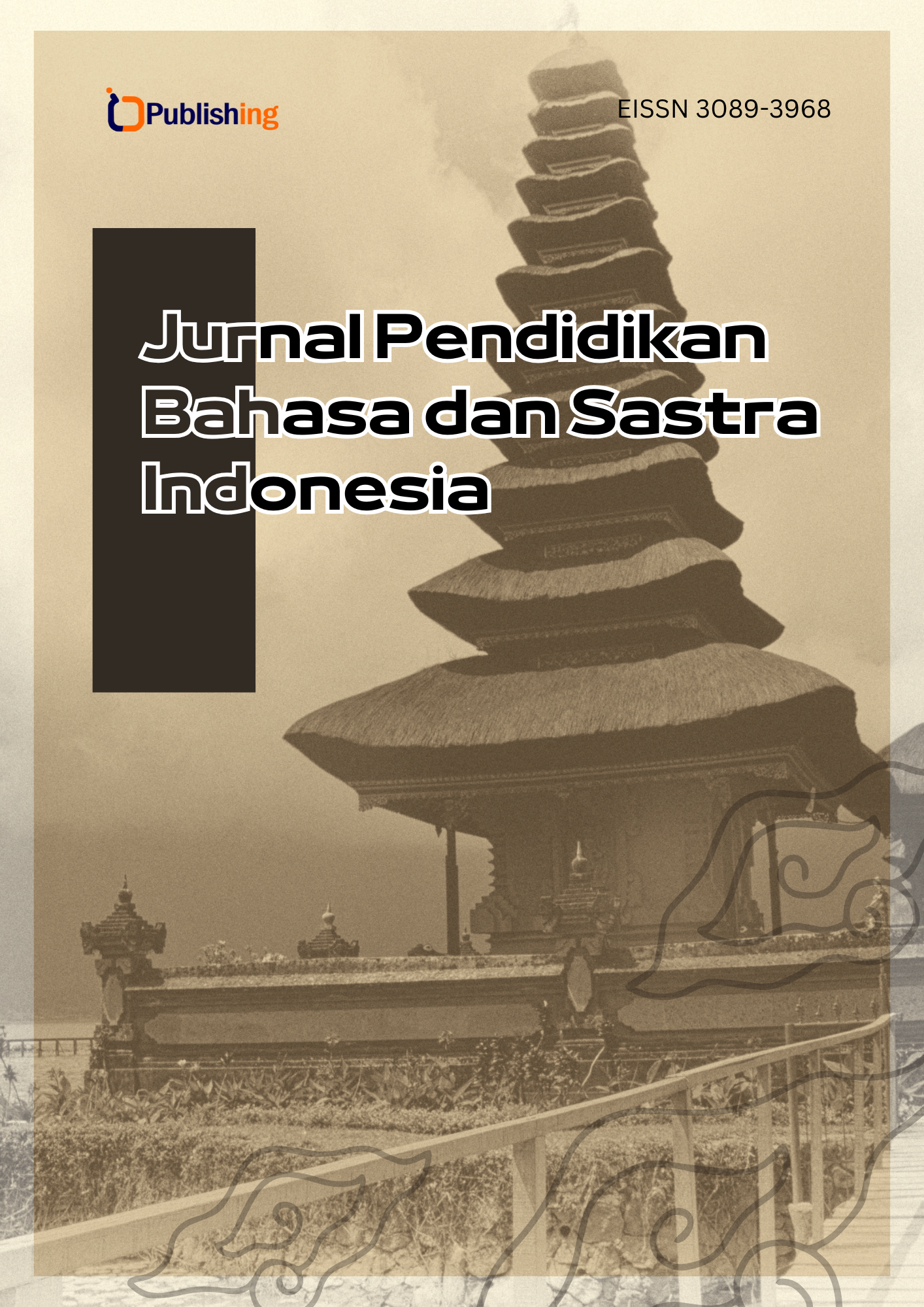Characteristics and Typology Of Artistic Language "Gunki Monogatari"
DOI:
https://doi.org/10.47134/jpbsi.v1i1.1443Keywords:
Hiragana, Katakana, Vabun, Kangobun, Tanka, Monogatari Bungaku No Kousatsu, (Literary Study, 1934) Joujyo-Hyougen (Lyricism And Expression) And Gendaino Bungaku (Modern Literature), Gunki Monogatari, Kamakura Period, Samurai, Shogunate,Abstract
The Kamakura period includes the period from 1185 to 1333. The peculiarity of this period is that with the change of power, it had its effect on literature, and the literary theme changed, the focus on heroism and old values, loyalty, bravery and new worldviews changed. This thing served to increase the military power in the society. In general, all events and feelings in human life are the main topic of literature. In 1192, the great leader of the "eastern" (Kanto) samurai detachments - Minamoto Yoritomo, after a long struggle, declares himself sei-taishogun, that is, the "supreme military leader" of Japan, thus the true and hereditary becomes a ruler. becomes the true and hereditary ruler of the whole country. Nevertheless, the Heian kings retain their supreme authority, but in fact begin to play almost exclusively the role of the "high priests" of their people - the supreme ministers of Shintoism. The Heian monarchy was replaced by a "shogunate" - a military system of government. The new management system also had an impact on literature. Now new genres have started to appear in it. First, the circle of readers has completely changed. Literature based on a new life, new state forms and a new culture, literary works characteristic of samurai culture began to be created. The student began to belong to a different social environment with a unique worldview. The boundaries of this circle have also expanded significantly. They began to attract an unprecedented number of readers in Japan. Literature began to be read not only by new people, but also lost its previous, essentially more exotic character and acquired a "wide" readership. A new author, a new reader, a new environment revived the new literature. And the main reason for this was the day
References
“Abe Tomoji as a theorist of Modernism” Javokhir Abubakirov “The American journal of social science and education innovations” (ISSN-2689-100x) https://doi.org/10.37547/tajssei/volume02issue11-30 28.11.2020 DOI: https://doi.org/10.37547/tajssei/Volume02Issue11-30
“Historical background of writing “Tale about the troubles of the Heji years” Javokhir Abubakirov . “Science, Innovation, Education: Topical issues of the XXI century” “International Scientific and Current Research Conferences”10-06-2022 pages:194-198 Doi - https://doi.org/10.37547/iscrc-intconf20
“The formation of the Gunki genre and its characteristics” Javokhir Abubakirov. “Current Problems of Modern Science” “International Scientific and Current Research Conferences” 15-09-2022 pages:83-86. Doi - https://doi.org/10.37547/iscrc-intconf22
Chrzanowska-Kluczewska, E. (2023). Transmedial Creation of Text Worlds. Pictorial Narration in Response to Verbal Texts. Discourses on Culture, 19(1), 25-64, ISSN 2450-0402, https://doi.org/10.2478/doc-2023-0002 DOI: https://doi.org/10.2478/doc-2023-0002
Conrad H. I. Essay on Japanese literature. Stati i issledovaniya. Login Article B. Suchkova. M., "God. lit.», 1973. p. 462
Dysers, C. (2023). Bernhard Lang: Critical guides to contemporary composers. Bernhard Lang: Critical Guides to Contemporary Composers, 1-191
Erokhina, V.A. (2024). STRUCTURAL AND FUNCTIONAL MODEL OF FORMATION OF CONFLICTOLOGICAL COMPETENCIES OF A MUSICIAN TEACHER. Musical Art and Education, 12(2), 63-74, ISSN 2309-1428, https://doi.org/10.31862/2309-1428-2024-12-2-63-74 DOI: https://doi.org/10.31862/2309-1428-2024-12-2-63-74
Javokhir ABUBAKIROV1 Dilafruz MUKHIDDINOVA2 Society and innovations Special Issue – 4 (2021) / ISSN 2181-1415
Jiménez, M. (2023). NON-NARRATIVE TYPOLOGIES: THE HERMETIC-METAPHORICAL MODE AND THE CINEMA OF ATTRACTIONS UNITED BY AESTHETIC EXPERIENCE. Atalante(35), 19-32, ISSN 1885-3730
Kalashnikova, O.L. (2024). “SOMEONE ELSE”: THE GENRE PARADIGM OF DETECTIVES BY GUILLAUME MUSSO. Alfred Nobel University Journal of Philology, 2(28), 58-75, ISSN 3041-217X, https://doi.org/10.32342/3041-217X-2024-2-28-4 DOI: https://doi.org/10.32342/3041-217X-2024-2-28-4
Kiklewicz, A. (2023). ART AND COMMUNICATION: ON THE PRAGMATIC ASPECTS OF ARTISTIC COMMUNICATION. Przeglad Rusycystyczny, 183(3), 9-30, ISSN 0137-298X, https://doi.org/10.31261/pr.15023
Kiseleva, I.A. (2024). Lexic-semantic Representation of the Image of the Caucasus in the Works of M. Yu. Lermontov. Russkaya Rech, 2024(1), 82-97, ISSN 0131-6117, https://doi.org/10.31857/S0131611724010076 DOI: https://doi.org/10.31857/S0131611724010076
Mateos, A.R. (2024). Christian Franzen Out of His Gallery: Photographs in the Illustrated Magazines (1895-1900). Fotocinema(28), 195-217, ISSN 2172-0150, https://doi.org/10.24310/FOTOCINEMA.28.2024.17692 DOI: https://doi.org/10.24310/fotocinema.28.2024.17692
Moskvin, V.P. (2023). Octave No. 11 by O. Mandelstam: Comments and Transcript. Studia Slavica Academiae Scientiarum Hungaricae, 66(2), 359-372, ISSN 0039-3363, https://doi.org/10.1556/060.2022.00029 DOI: https://doi.org/10.1556/060.2022.00029
Oliveira, A. Conduto (2023). The Elusive Musekin—Interpreting a Mysterious Piece of Medieval Armour. Arms and Armour, 20(1), 54-73, ISSN 1741-6124, https://doi.org/10.1080/17416124.2023.2189871 DOI: https://doi.org/10.1080/17416124.2023.2189871
Opilowski, R. (2023). Functional discourses of contemporary multilingualism in urban texts: A case study of three capital cities: Warsaw, Berlin, and Luxembourg. Moderna Sprak, 117(1), 20-43, ISSN 2000-3560, https://doi.org/10.58221/mosp.v117i1.14131 DOI: https://doi.org/10.58221/mosp.v117i1.14131
Pagliano, A. (2024). Introduction. Urban Book Series, 1-9, ISSN 2365-757X, https://doi.org/10.1007/978-3-031-47246-6_1 DOI: https://doi.org/10.1007/978-3-031-47246-6_1
Peculiarities of Kamakura Period Literature in Japanese Literature .Javokhir Soatulla Ugli Abubakirov Central Asian journal of literature, philosophy and culture. Volume: 03 Issue:04 April 2022
Shem-Tov, N. (2021). Israeli theatre: Mizrahi jews and self-representation. Israeli Theatre: Mizrahi Jews and Self-Representation, 1-202, https://doi.org/10.4324/9781351009089 DOI: https://doi.org/10.4324/9781351009089-1
The artistic features of 人口庭園 “A fake garden” of Abe Tomoji
Конрад H. И. Очерки японской литературы. Статьи и исследования. Вступ. статья Б. Сучкова. М., «Худож. лит.», 1973. с. 462
後白河院と平清盛――王権をめぐる葛藤―― 高橋昌明 歴史評論 2004年
語りとしての平家物語/ 山下宏明著/ 岩波書店/ 1994年






